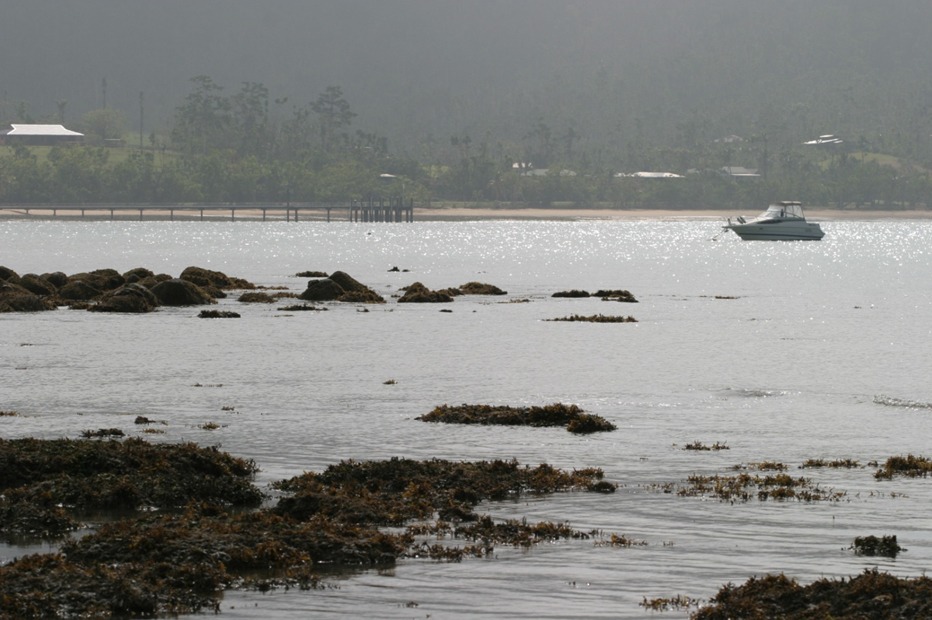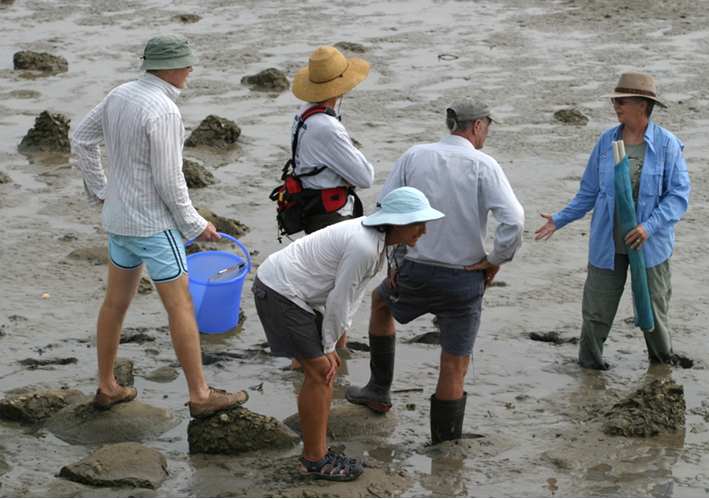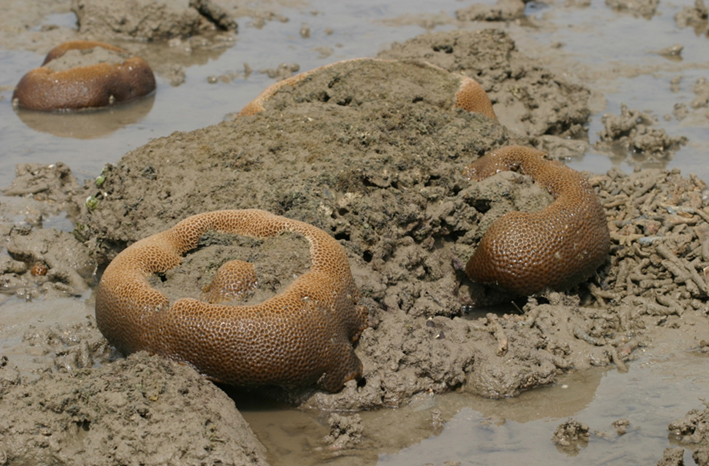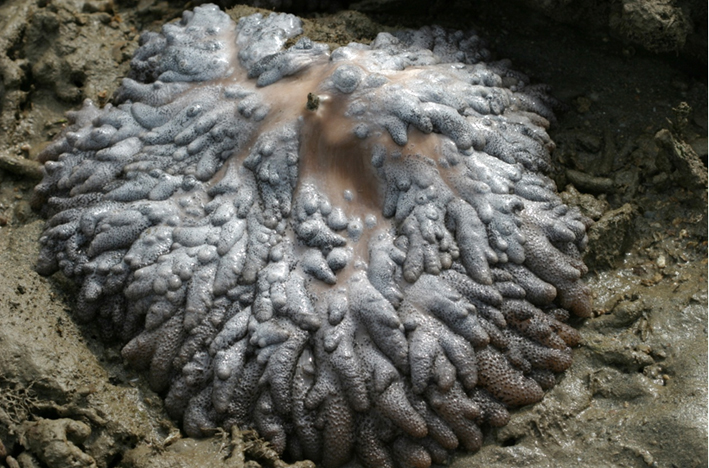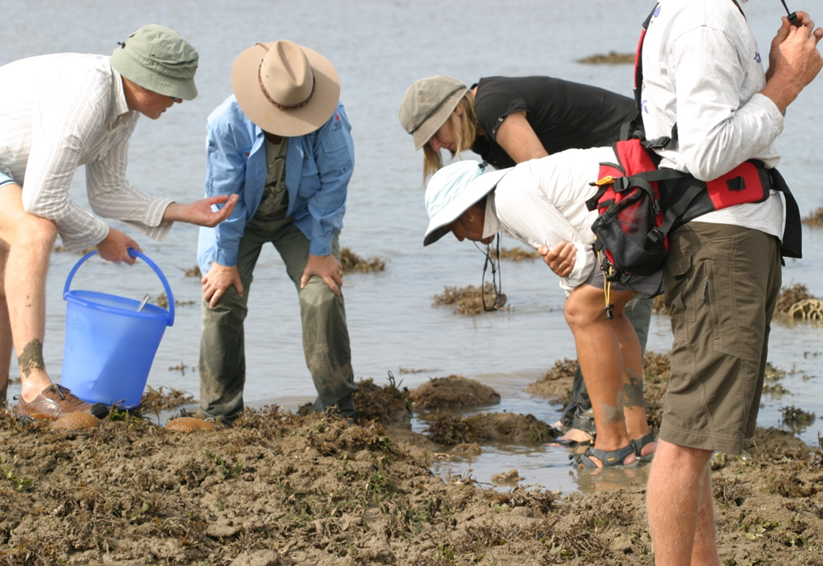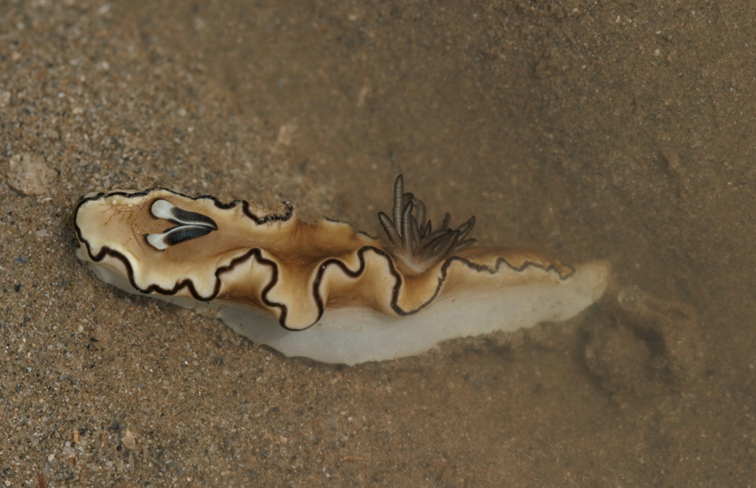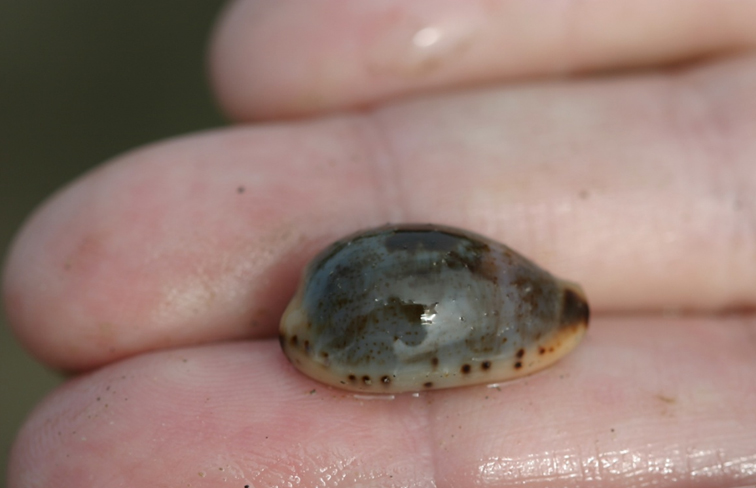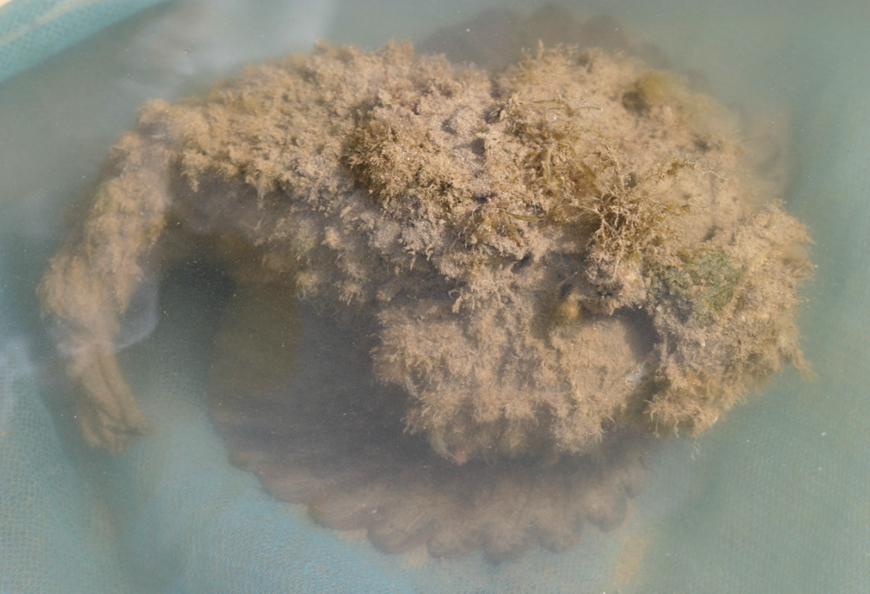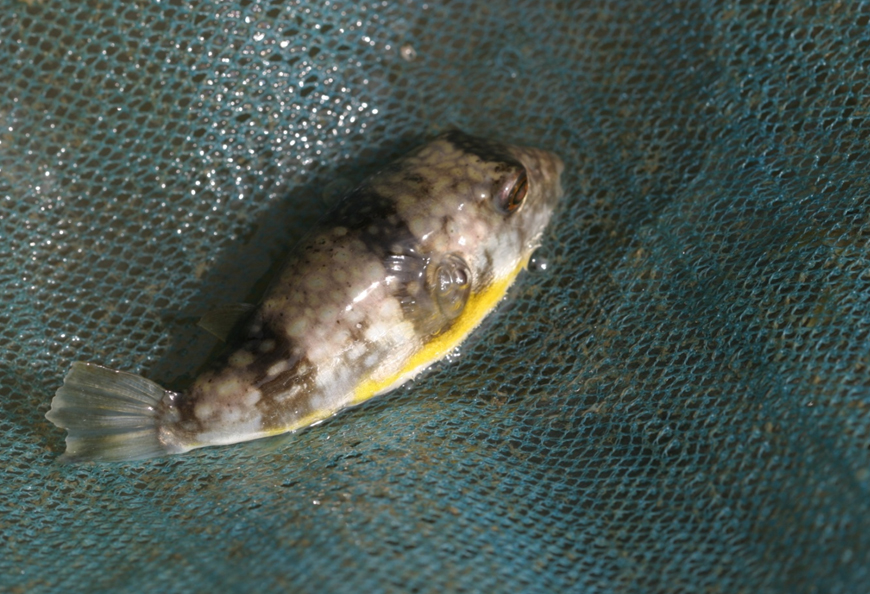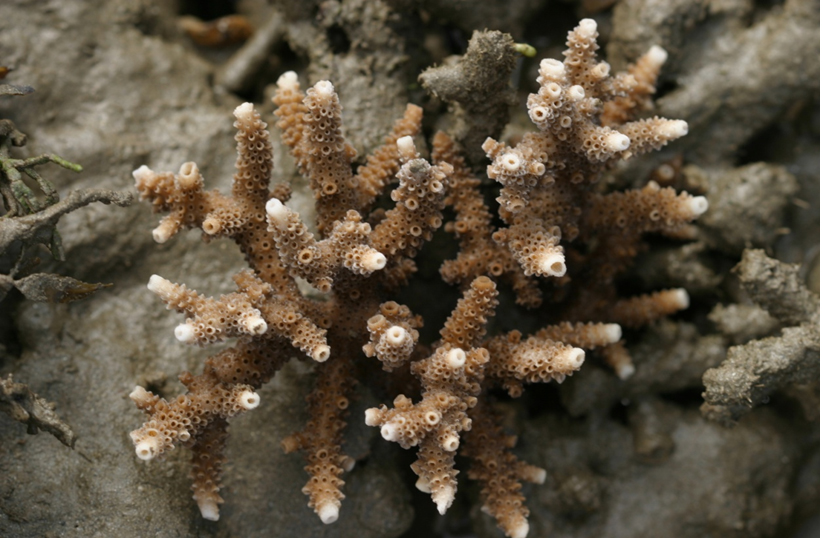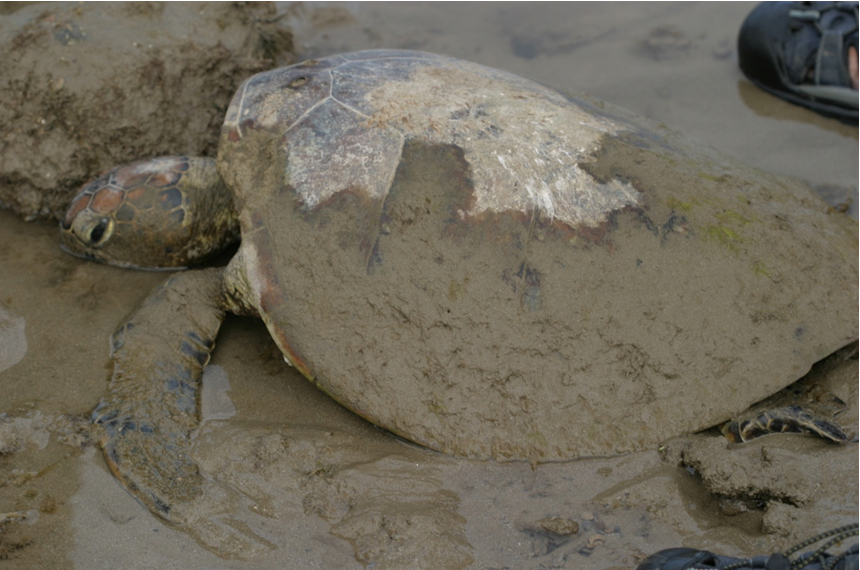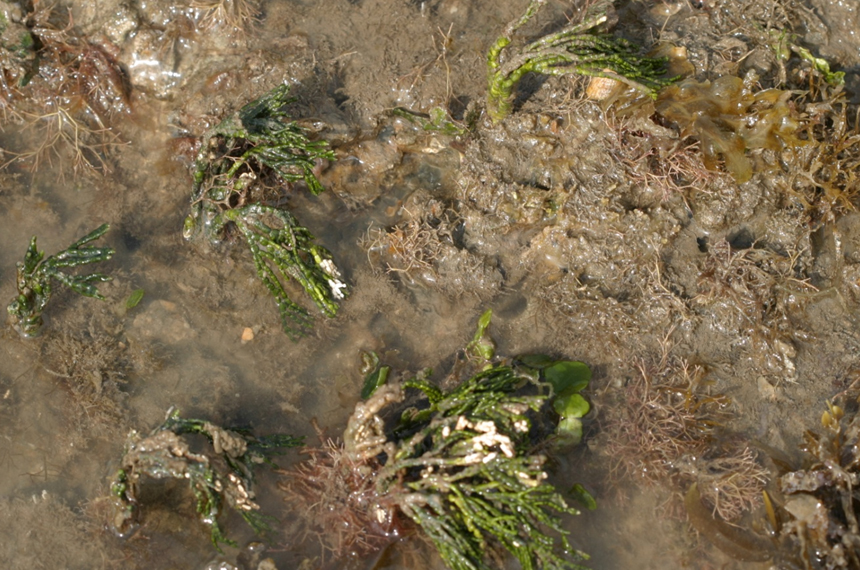| By Dr Helen K. Larson - Wongaling Beach On 29 August 2011, a small group of us went for a spring tide (0.5 m low) walk in Boat Bay. “We” being myself, Jeff Larson, Tony O’Malley, Liz Gallie, Maurie Franklin, Peter Rowles, Attie Willy and David Tofler. It was a walk that I had been promising myself since we moved here nearly two years ago. Because I had not walked here before, I did not know if the amount of mud we observed was usual for the time of year or whether the bay had accumulated more sediment since TC Yasi. Close to the shore the mud was occasionally thick between the rocks. |
We turned over rocks and turned them back the way they were, we poked with our fingers and dipped with small nets.
Some of the things we found would also be called beautiful if you were an ichthyologist like me, but others didn’t seem to think so, such as this very well-disguised and very venomous Estuarine Stonefish (spotted by Liz).
The stonefish sat quietly with its tail curled up while it got moved about and its venomous spines erected by a stout pair of forceps, convinced that it was invisible in its coat of mud and algae, even though I had moved it onto my scoopnet so it could be seen more easily.
Plants
Bryopsis sp., a feathery green alga, Bryopsidaceae
Dictyosphaeria cavernosa, a green alga, Siphonocladaceae
Padina sp., a fan-shaped brown alga, Dictyotaceae
Halimeda cylindrica, a fine-branched calcified green alga, Halimedaceae
Halimeda spp., other species of calcified green algae, Halimedaceae
Sargassum sp., sargassum (a brown alga), Sargassaceae
Neomeris van-bosseae, a calcified green alga, Dasycladaceae
Caulerpa racemosa, a “bunch of grapes” green alga, Caulerpaceae
Amphiroa probably , a fine-branched coralline red alga, Corallinaceae
Trichodesmium erythraeum, “sea sawdust”, a marine blue-green alga, Oscillatoriaceae
Many unidentified red and brown algae
Invertebrates
Acropora sp., staghorn coral, Acroporidae
Favites sp., faviid coral, Faviidae
Porites sp., porites coral, Poritidae (this is the ‘micro-atoll’ or bommie coral)
Palythoa sp., colonial zooanthid, Zooanthidae (look like soft corals but they aren’t)
Sarcophyton sp., leather soft coral, Alcyoniidae
Nassarius dorsatus, Dog whelk, Nassariidae (super-scavengers)
Alpheus sp., Snapping shrimp, Alpheidae
Unidentified hermit crab, Diogeniidae
Palaemon sp., Rock-pool shrimp, Palaemonidae
Portunus sp., juvenile swimmer crab, Portunidae
Pinna bicolor, Pen shell, Pinnidae
Cypraea gracilis, Graceful cowry, Cypraeidae
Glossodoris atromarginata, Black-margined glossodoris (a nudibranch mollusc; has a small shell), Chromodorididae
Unidentified shy octopus
Holothuria atra, Black seaslug, Holothuridae
Several unidentified small seaslugs
Fish
Periophthalmus argentilineatus, Silver-lined Mudskipper,Gobiidae
Pseudogobius sp., Mangrove fatnose goby, Gobiidae
Favonigobius melanobranchus, Blackthroat Goby, Gobiidae
Sillago spp., juvenile and post-larval whitings, Sillaginidae
Gobiopterus sp. Glass-goby, Gobiidae
Pelates sexlineatus, Eastern Striped Grunter, Terapontidae
Trachinocephalus myops, juvenile Painted Grinner, Synodontidae
Himatura granulata, Mangrove Whipray, Dasyatidae
Neopomacentrus taeniurus, Freshwater Demoiselle, Pomacentridae
Synanceia horrida, Estuarine Stonefish, Synanceidae
Unidentified post-larval clupeioids (just settled-out baby sardines and/or anchovies)
Reptiles
Chelonia mydas, Green Sea Turtle, Cheloniidae
Birds
Fregata ariel, Lesser Frigate, Fregatidae
Hirundo neoxena, Welcome Swallow, Hirudinidae
Todiramphus sanctus, Sacred Kingfisher, Halcyonidae
Haliaeetus leucogaster, White-bellied Sea-eagle, Accipitridae
Pandion cristatus, Eastern Osprey, Accipitridae
Thalasseus bergii, Crested Tern, Laridae
